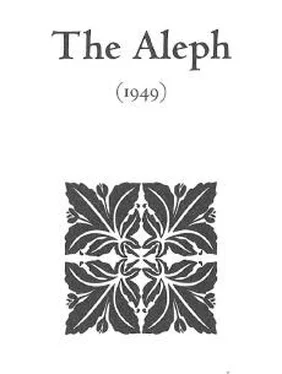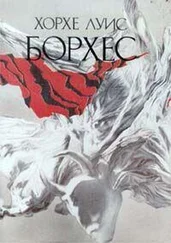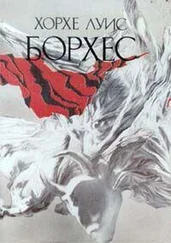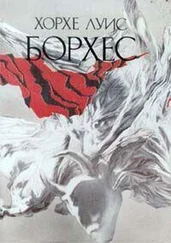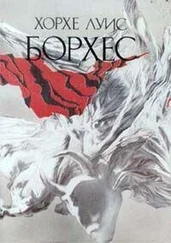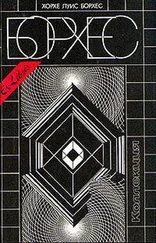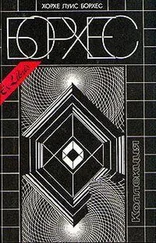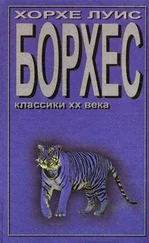Хорхе Борхес - Collected Fictions
Здесь есть возможность читать онлайн «Хорхе Борхес - Collected Fictions» весь текст электронной книги совершенно бесплатно (целиком полную версию без сокращений). В некоторых случаях можно слушать аудио, скачать через торрент в формате fb2 и присутствует краткое содержание. Год выпуска: 1999, ISBN: 1999, Издательство: Penguin (UK), Жанр: Старинная литература, на английском языке. Описание произведения, (предисловие) а так же отзывы посетителей доступны на портале библиотеки ЛибКат.
- Название:Collected Fictions
- Автор:
- Издательство:Penguin (UK)
- Жанр:
- Год:1999
- ISBN:9780140286809
- Рейтинг книги:5 / 5. Голосов: 1
-
Избранное:Добавить в избранное
- Отзывы:
-
Ваша оценка:
- 100
- 1
- 2
- 3
- 4
- 5
Collected Fictions: краткое содержание, описание и аннотация
Предлагаем к чтению аннотацию, описание, краткое содержание или предисловие (зависит от того, что написал сам автор книги «Collected Fictions»). Если вы не нашли необходимую информацию о книге — напишите в комментариях, мы постараемся отыскать её.
Collected Fictions — читать онлайн бесплатно полную книгу (весь текст) целиком
Ниже представлен текст книги, разбитый по страницам. Система сохранения места последней прочитанной страницы, позволяет с удобством читать онлайн бесплатно книгу «Collected Fictions», без необходимости каждый раз заново искать на чём Вы остановились. Поставьте закладку, и сможете в любой момент перейти на страницу, на которой закончили чтение.
Интервал:
Закладка:
A Survey of the Works of Herbert Quain
* The Siamese Twin Mystery: A novel by Ellery Queen, published in 1933. Here the literary critic-narrator is lamenting the fact that Quain's novel was overshadowed by the much more popular Queen's.
ARTIFICES
Funes, His Memory
* Title: This story has generally appeared under the tide"Funes the Memorious," and it must be the brave (or foolhardy) translator who dares change such an odd and memorable title. Nor would the translator note (and attempt to justify) his choice of a translation except in unusual circumstances. Here, however, the title in the original Spanish calls for some explanation. The title is"Funes el memorioso"; die word memorioso is not an odd Spanish word; it is in fact perfectly common, if somewhat colloquial. It simply means "having a wonderful or powerful memory," what in English one might render by the expression "having a memory like an elephant." The beauty of the Spanish is that the entire long phrase is compressed into a single word, a single adjective, used in the original title as an epithet: Funes die Elephant-Memoried. (The reader can see that that translation won't do.) The word "memorisi" is perhaps die closest thing that common English yields up without inventing a new word such as "memorious," which strikes the current translator as vaguely Lewis Carroll-esque, yet "memorisi" has something vaguely show business about it, as though Funes worked vaudeville or the carnival sideshows. The French tide of this story is the lovely eighteenth-century-sounding "Funesou La Mémoire"; with a nod to JLB's great admirer John Bardi, I have chosen "Funes, His Memory."
* The Banda Oriental: The "eastern bank" of the River Plate, die old name of Uruguay before it became a country, and a name used for many years afterward by the "old-timers" or as a sort of nickname.
* Pedro Leandro Ipuche: The Uruguayan Ipuche was a friend of die young ultraist-period Borges (ca.1925), with whom (along with Ricardo Guiraldes, author of the important novel Don Segundo Sombra) he worked on the literary magazine Proa (Fishburn and Hughes). Proa was an influential little magazine, and Borges and friends took it seriously; they were engaged, as Rodriguez Monegal quotes the "Autobiographical Essay" as saying, in "renewing both prose and poetry."
* Fray Bentos: "A small town on the banks of the Uruguay River, famous for its meat-canning industry. In his youth Borges was a regular visitor to his cousins' ranch near Fray Bentos"(Fishburn and Hughes). Haedo was in fact the family name of these cousins.
* The thirty-three Uruguayan patriots: The "Thirty-three," as they were called, were a band of determined patriots under the leadership of Juan Antonio Lavalleja who crossed the River Plate from Buenos Aires to Montevideo in order to "liberate" the Banda Oriental (Uruguay) from the Spaniards. Their feat of bravery, under impossible odds, immortalized them in the mythology of the Southern Cone. For fuller detail, see the note to p. 474, for the story"Avelino Arredondo"in the volume The Book of Sand.
Three Versions of Judas
* Euclides daCunha: Cunha (1866-1909) was a very wellknown Brazilian writer whose most famous novel is a fictional retelling of an uprising in the state of Bahia. He was moved by the spiritualism (Fishburn and Hughes note its mystical qualities) of the rebels.
* Antonio Conselheiro: (1828-1897). Conselheiro was "a Brazilian religious dissident who led a rebellion in Canudos, in the northern state of Bahía. The rebels were peasants ... who lived in a system of communes, working out their own salvation. They rose against the changes introduced by the new Republican government, which they regarded as the Antichrist.... Conselheiro's head was cut off and put on public display" (Fishburn and Hughes). His real name was Antonio Maciel; conselheiro means "counselor," and so his messianic, ministerial role is here emphasized.
* Almafuerte: The pseudonym of Pedro Bonifacio Palacio (1854-1917), one of Argentina's most beloved poets. A kind of role model and hero to young writers, akin to the phenomenon of Dylan Thomas in Britain and the United States a few years ago, Almafuerte was one of JLB's most admired contemporaries.
The End
* "It'd been longer than seven years that I'd gone without seeing my children. I found them that day, and I wouldn't have it so's I looked to them like a man on his way to a knife fight": It is not these words that need noting, but an"intertextual event." It is about here that the Argentine reader will probably realize what this story is about: It is a retelling of the end of José Hernández' famous tale Martín Fierro. As Fierrois a knife fighter, and as a black man figures in the poem, and as there is a famous song contest, the reader will put two and two together, no doubt, even before Martin Fierro's name is mentioned a few lines farther on. This is the way Fishburn and Hughes state the situation: "The episode alluded to in 'The End' is the payada, or song contest, between Martín Fierro and el moreno ["the black man"] who was the brother of the murdered negro. In the contest the gauchos discuss metaphysical themes, but towards the end el moreno reveals his identity, and his desire for revenge is made clear. In keeping with the more conciliatory tone of pt. 2 [of Hernandez' original poem] a fight is prevented between the two contestants, each going his own way. "The End" is a gloss on this episode, the fight that might have taken place." By this late in the volume, JLB's Preface to the stories, hinting at the coexistence of a "famous book" in this story, may have dimmed in the reader's memory, but for the Latin American reader, the creeping familiarity of the events, like the echoes of Shakespeare in the assassination of Kilpatrick in "Theme of the Traitor and the Hero," should come into the foreground in this section of the story, and the reader, like Ryan in that other story, make the "connection."
The South
* Buenos Aires: Here the province, not the city. The reference is to the northern border, near Entre Ríos and Santa Fe provinces, on the Paraná River.
* Catriel: Cipriano Catriel (d. 1874). Catriel was an Indian chieftain who fought against the Argentines in the Indian wars. Later, however, he fought on the side of the revolutionary forces (Fishburn and Hughes).
* His gaucho trousers: This is the chiripá, a triangular worsted shawl tied about the waist with the third point pulled up between the legs and looped into a knot to form a rudimentary pant, or a sort of diaper. It is worn over a pair of pantaloons (ordinarily white) that "stick out" underneath. Sometimes, incredible as it strikes Anglo-Saxons that the extraordinarily machista gauchos would wear such clothing (but think of the Scots' kilts), the pantaloons had lace bottoms.
Notes to The Aleph
The Dead Man
* Rio Grande doSul: The southernmost state of Brazil, bordering both Argentina and Uruguay on the north. Later in this story, a certain wildness is attributed to this region; JLB often employed the implicit contrast between the more "civilized" city and province of Buenos Aires (and all of Argentina) and the less "developed" city of Montevideo and nation of Uruguay and its "wilderness of horse country," the "plains," "the interior," here represented by Rio Grande do Sul.
* Paso del Molino: "A lower-to-middle-class district outside Montevideo" (Fishburn and Hughes).
Story of the Warrior and the Captive Maiden
Читать дальшеИнтервал:
Закладка:
Похожие книги на «Collected Fictions»
Представляем Вашему вниманию похожие книги на «Collected Fictions» списком для выбора. Мы отобрали схожую по названию и смыслу литературу в надежде предоставить читателям больше вариантов отыскать новые, интересные, ещё непрочитанные произведения.
Обсуждение, отзывы о книге «Collected Fictions» и просто собственные мнения читателей. Оставьте ваши комментарии, напишите, что Вы думаете о произведении, его смысле или главных героях. Укажите что конкретно понравилось, а что нет, и почему Вы так считаете.
